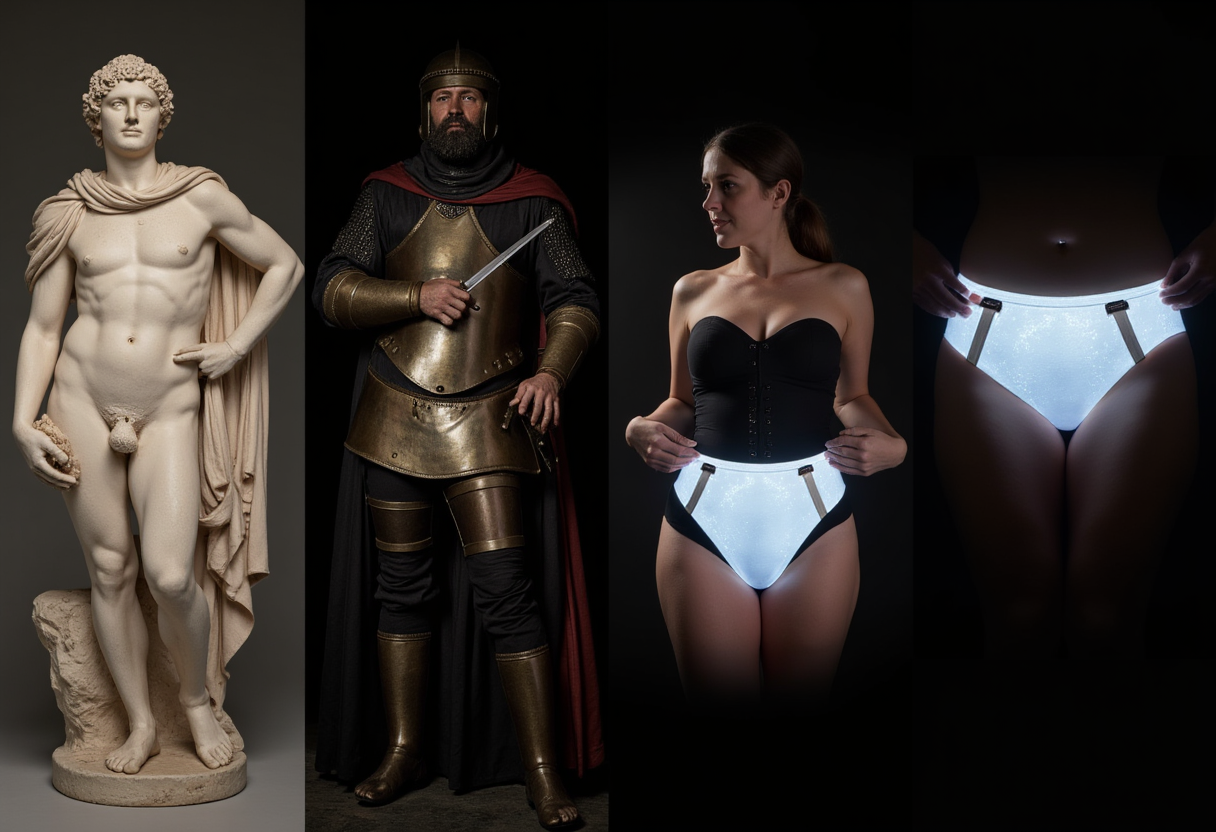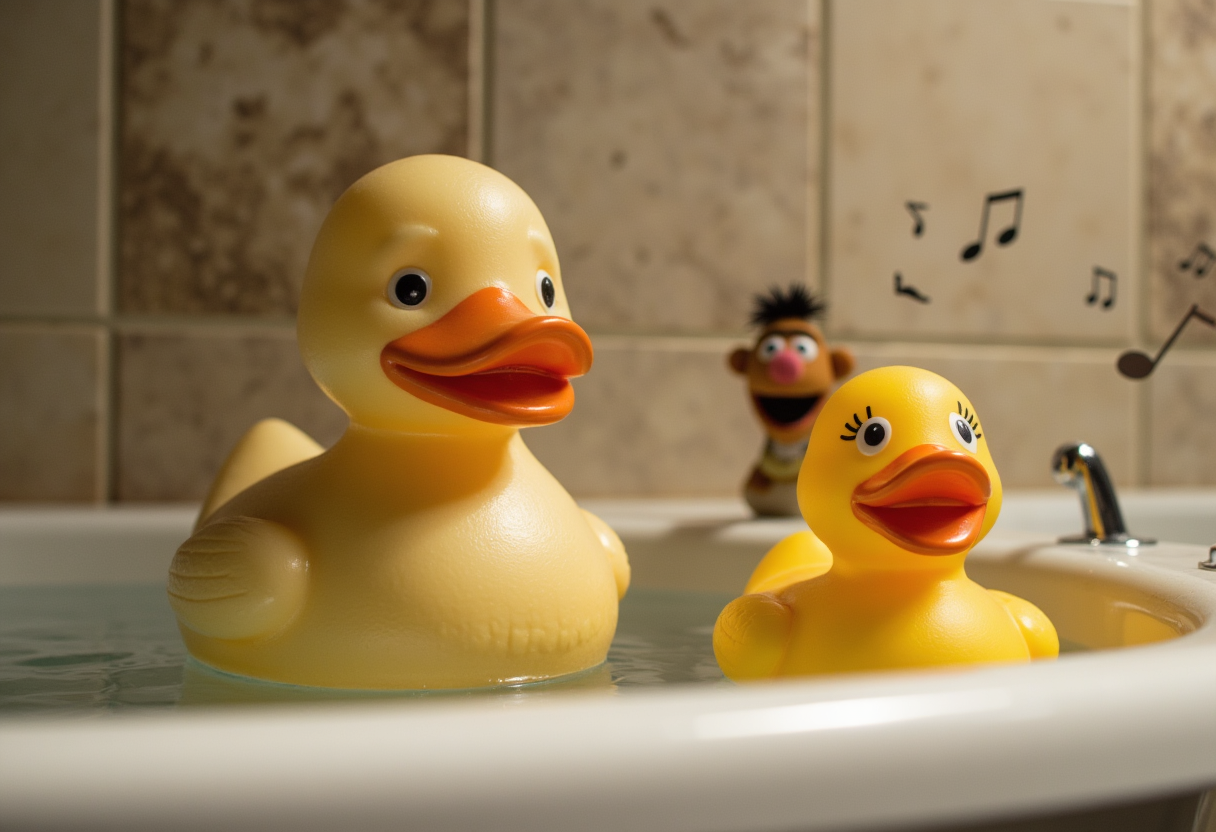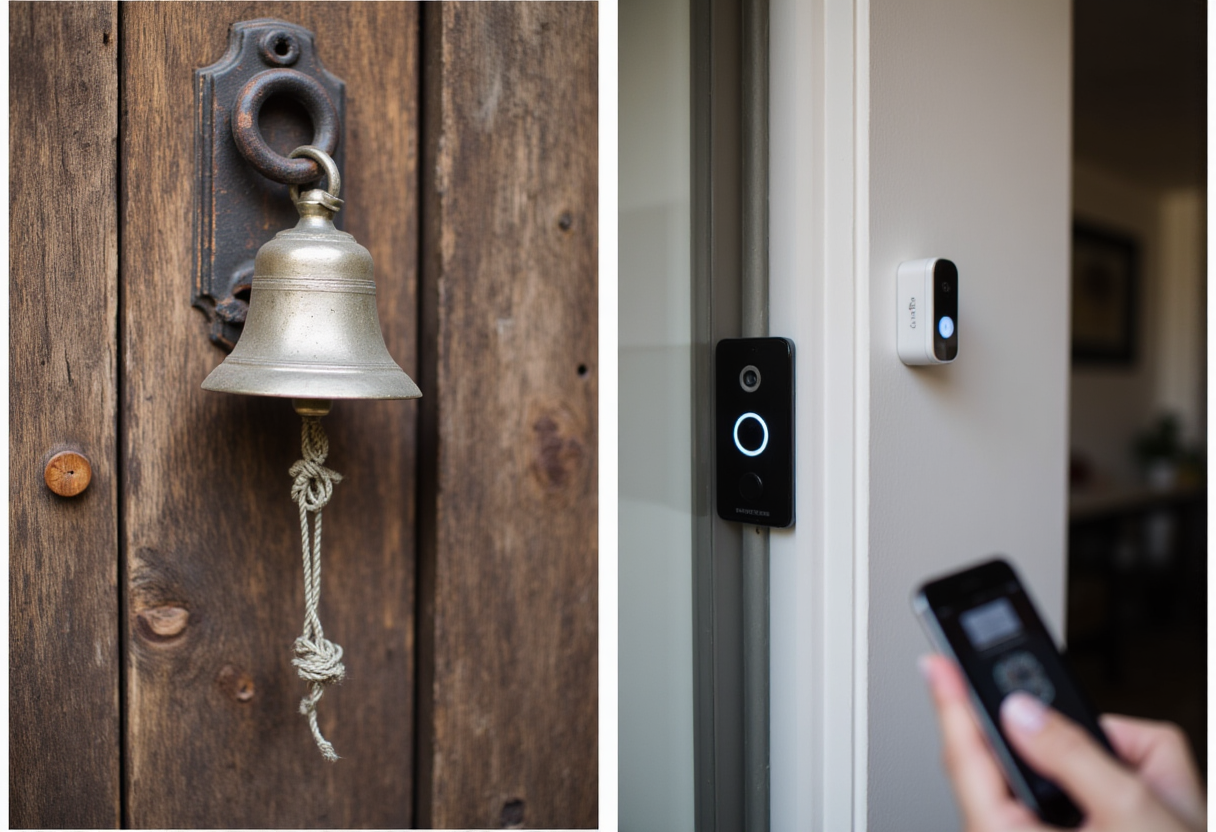The Weird and Wacky Stories Behind Everyday Objects
Every day we reach for utensils, pull on pants, hit the snooze button, and use dozens of objects without a second thought. These ordinary items—on your desk, in the kitchen, or tucked into a junk drawer—hide surprisingly strange origin stories.
Believe it or not, toothpaste recipes once included crushed animal parts like ox hooves, and a janitor battling asthma cobbled together a machine from a fan and a pillowcase that helped launch a vacuum empire.
These quirky facts are all true, but we will flag specific dates and sources as we go.
In this post you’ll get a quick list-style tour of kitchen gear, clothing and underwear, hygiene products, and home-tech—short histories that show how everyday objects evolved from crude beginnings into the clever tools of our daily routine.
Expect fun facts, a few surprising names, and examples you can bring up at parties (or at the breakfast table).
Keep reading for a handful of the best origin stories, and if you like these kinds of lists, jump to the section you want or bookmark the post for later.
🍴 The Spork Saga: A Tale of One Utensil to Rule Them All
The spork: part spoon, part fork, fully practical. Early hybrid utensils appeared in patent records in the 19th century; one commonly cited example is an 1874 patent described as an "ice cream fork."
The playful term “runcible spoon,” coined by Edward Lear in the 19th century, also got tangled up in spork lore — a reminder that language and invention often collide in unexpected ways.
Institutions embraced the spork in the 20th century because it saved money and simplified dining logistics. Modern versions range from bamboo and recycled-plastic models to lightweight titanium, and designers are already prototyping 3D-printed and multi-function variants for campers and travelers.
🩲 Underwear: Unmentionables With a Story to Tell
Underwear has evolved from practical loincloths to tech-enabled garments. In ancient Rome, the subligaculum served as a simple unisex undergarment; in Medieval Europe, loose braies were common.
The Victorian era introduced structured undergarments like corsets and the union suit, which influenced clothing, hygiene, and social norms for decades.
Today’s underwear includes sustainable fabrics (eucalyptus fiber boxers), temperature-regulating materials, and even biometric designs that can monitor certain health signals — an intersection of fashion and wearable tech.
😬 The Gritty History of Toothpaste
Early dental cleansers were closer to powders than paste, and ancient recipes could be surprising. Archaeological sources describe Egyptian dental preparations that included ash, crushed eggshells, pumice, and other abrasives.
By the 19th century, toothpaste formulations shifted toward chalk and soap, and commercial pastes emerged: for example, Colgate began selling dental cream in jars in the 1870s. The convenient squeeze tube arrived in the 1890s and helped toothpaste become the household staple we recognize today.
Contemporary toothpaste options include whitening, anti-cavity, flavor varieties, and even smart brushes and apps that track brushing habits — a clear example of how a mundane hygiene object joined the modern data-fueled daily routine.
🦆 Rubber Duck: From Bath Toy to Cultural Icon
"Rubber Duck: From Bath Toy to Cultural Icon
The rubber duck’s journey from floor toy to bathroom mascot is unexpectedly modern. In the late 19th century, early rubber toys were often solid and non-buoyant; it wasn’t until the mid-20th century that designers began producing the hollow, floating squeak-toys we recognize today.
Sculptor Peter Ganine is often credited with popularizing a patented floating duck design in the 1940s, and mass media sealed the duck’s place in pop culture: Sesame Street’s Ernie famously turned a bathtub toy into a charting novelty with “Rubber Duckie.”
Modern versions span glow-in-the-dark and novelty costumes to collectible vinyl figures — a small example of how even the silliest household object can become a cultural icon.
💡 Light Bulb Lies and Legends
The story of the light bulb is actually a story about many inventors building on each other. Humphry Davy produced the first electric arc lamp in 1802; later innovators such as Warren de la Rue and Joseph Swan improved filaments and vacuum techniques over the 19th century.
Thomas Edison’s major contribution was turning experimental bulbs into a practical, longer-lasting lamp and creating the electrical distribution systems needed for household use. Today, LEDs and smart bulbs that change color or integrate with home systems have replaced the early incandescent workhorses.
🧹 Vacuum Cleaners: A Dusty Origin Story
Cleaning technology moved from manual brooms and carts to powered suction over a few key innovations.
In 1901, Hubert Booth developed an early powered vacuum so large it remained outside while hoses reached inside buildings; it demonstrated the feasibility of mechanical suction cleaning at scale.
A more compact, consumer-friendly breakthrough came when janitor James Spangler adapted a fan, a pillowcase, and a box in 1907 to address his asthma — a design that led to the Hoover company bringing vacuums into everyday homes.
Now robot vacuums map floors, auto-empty, and can be scheduled from phones — a clear evolution from curbside suction rigs to smart household helpers.
🚽 Toilets: A Revolution in Plumbing
Toilets transformed public health and home life. Ancient urban centers such as the Indus Valley had remarkably advanced sanitation systems and evidence of indoor drainage; later European innovators adapted and popularized flushing mechanisms for household use.
Sir John Harington described a flushing device in 1596 for Queen Elizabeth I, and in the 19th century figures like Thomas Crapper helped normalize and commercialize practical plumbing components—though Crapper popularized rather than solely invented modern fixtures. The result was cleaner cities and a major change in daily routines.
Today’s toilets range from simple bowls to high-tech units that warm seats, wash and dry, self-clean, and even offer basic health analytics—an evolution from ancient water channels to connected household devices.
⏰ Alarm Clocks: Because Oversleeping Has a History
Humans have long engineered ways to mark time and wake up. Ancient Greeks used water clocks to measure intervals; in East Asia, incense-based timing devices marked hours with scent and ash.
The first known personal mechanical alarm was made in 1787 by Levi Hutchins, though it rang at a fixed time for his needs; adjustable alarm mechanisms emerged later in the 19th century.
Modern alarm technology now includes sunrise-simulating lights, vibrating sleep accessories, and smartphone apps that force tasks or math problems to dismiss—tools that reshape how people start their day and manage time.
☂️ Umbrellas: Fashion First, Function Later
Umbrellas began as protection from the sun rather than rain. Used for millennia across Mesopotamia, Egypt, India, and China, early parasols signaled social status before evolving into practical rain protection.
By the 1700s, parasols were common fashion accessories in Europe, and figures such as Jonas Hanway helped normalize umbrella use among men in cities like London.
"Umbrellas: Fashion First, Function Later"
Today’s umbrellas fold, resist wind, clip to backpacks, and combine sun and rain protection—small, portable objects that quietly improve everyday life.
☕ Coffee Makers: A Brew-tiful Legacy
Coffee has shaped work habits and morning routines for centuries. Early methods like 15th-century Turkish coffee involved boiling finely ground beans with water; later centuries introduced percolators, drip brewers, and the countertop machines that brought café-style drinks into the home.
Instant coffee appeared in the late 19th century and made brewed coffee more convenient; the 20th century then saw pod systems and single-serve machines that simplified brewing even further.
Today’s smart coffee makers can start with your alarm, sync with schedules, and recommend blends — turning a basic bottle or mug of coffee into a connected part of your daily routine.
Impact: coffee machines increased productivity (work-friendly caffeine on demand), changed morning rituals, and created entire industries around beans, bottles, and single-serve formats.
🧊 The Fridge: Keeping Cool Has a History
Keeping food cold went from ice pits and cellars to electric refrigerators that transformed kitchens and food safety. Early domestic refrigerators became available to middle-class households in the early 20th century, and companies like Frigidaire and GE popularized reliable home models.
Modern fridges do more than chill: they make clear ice, manage grocery lists, stream media, and even warn you when someone swipes your leftover yogurt. The refrigerator changed how people store food and plan meals, reducing waste and expanding culinary possibilities.
Alt text suggestion for an image: “vintage refrigerator next to modern smart fridge showing grocery list on screen.”
"Doorbells: From Ding Dong to Video-on": A rustic, pull-string bell on an old wooden door, ringing vigorously, juxtaposed with a modern smart doorbell unit
🔔 Doorbells: From Ding Dong to Video-on
Doorbells began as manual bells or pull levers and evolved with electricity in the 19th century. Early electric signaling devices date to the 1830s, and apartment buzzers and wired systems followed in the 20th century.
Contemporary smart doorbells (for example, video-enabled units) record motion, stream video to phones, and integrate with home security — a clear shift from simple ding-dongs to connected home-entry devices that change how people manage visitors and deliveries.
Impact: doorbell tech improved home security, convenience for busy people, and the ability to handle deliveries when you’re away from home.
🧷 Zippers, Paperclips, and Pens — Unsung Heroes of the “Oh Snap” Era
The Zipper
Small, often overlooked, zippers dramatically changed clothing production and everyday convenience.
Early concepts appeared in the 19th century (Elias Howe and Whitcomb Judson submitted early designs), but Gideon Sundback’s 1913 improvements to the fastening mechanism made the device practical for widespread use; a boot company later popularized the catchy name “zipper.”
Why it matters: zippers sped up dressing, simplified garment design, and remain a standard fastener in clothing and luggage—a tiny object with big impact on daily routines and what people wear.
The Paperclip
The paperclip is a perfect example of a simple product with a surprisingly symbolic history.
Johan Vaaler is often associated with early clip designs, but the familiar “Gem” paperclip likely evolved without a single patent. During WWII, Norwegians wore paperclips as a subtle sign of resistance—an ordinary desk supply turned quiet political statement.
Why it matters: paperclips keep documents organized, support office workflows, and even hold cultural meaning—proof that small objects can carry big stories.
The Ballpoint Pen
The ballpoint pen solved a persistent problem with fountain pens: leaking and slow-drying ink. László Bíró developed a rolling-ball mechanism in the late 1930s using quick-drying inks, and the design spread rapidly—especially valued by pilots and military personnel because it reduced leaks at altitude.
Why it matters: ballpoints made writing cleaner and more reliable for work, school, and everyday notebooks and sheets—an inexpensive tool that reshaped how people record ideas and keep lists.
🎉 Final Thought: Not-So-Boring Fun Facts Everywhere
What ties all these stories together is simple: ordinary things in our homes and on our desks often started as clever, strange, or accidental inventions. From socks and soap to scissors and self-watering plants, everyday objects carry histories that are practical, surprising, and sometimes downright amusing.
Next time you zip a jacket, press a doorbell, or squeeze toothpaste onto your brush, take a moment to appreciate the inventors, patents, and oddball moments that brought those objects into your daily routine. Small items can change how people live and work — and they make excellent conversation starters.
If you enjoyed this list, share your favorite weird-object origin in the comments, bookmark this post for later, or check out related posts on everyday objects and quirky invention histories. Want more? Sign up for our weekly roundup of fun facts and ideas.
Earl L ee






